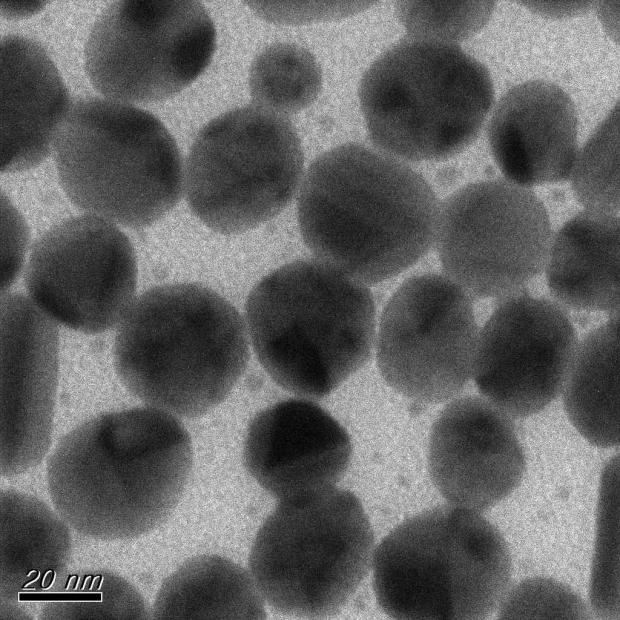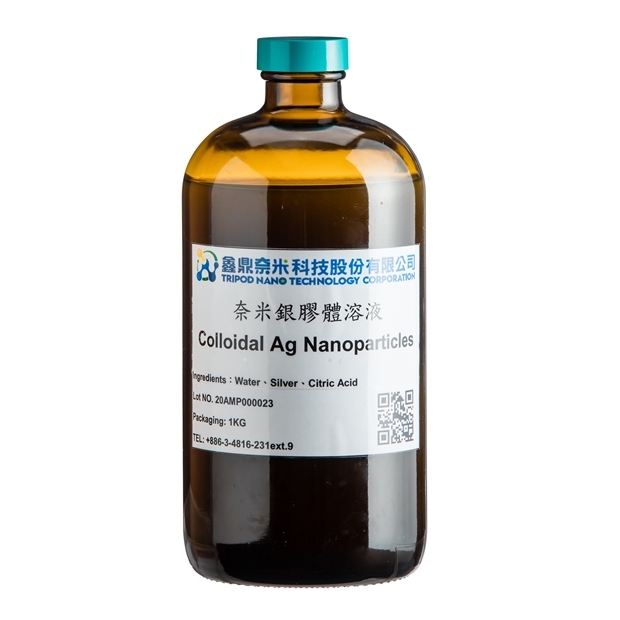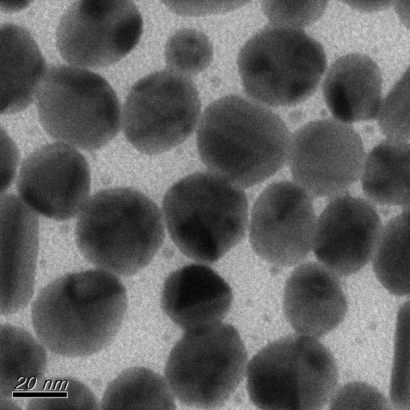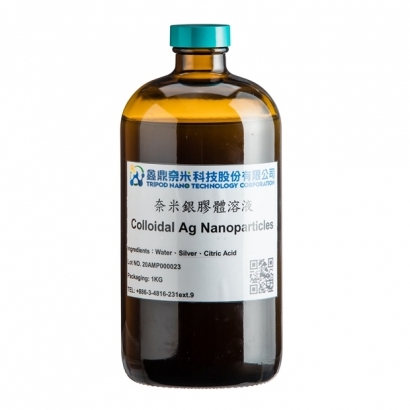Average size : 30 ± 5 nm
Size distribution ( CV% ) : < 5%
Peak wavelength : 518-520 nm
Silver Nanoparticle Applications
Silver nanoparticles are one of the most commonly utilized nanomaterials due to their anti-microbial properties, high electrical conductivity, and optical properties.
Medical Applications
Silver nanopaticles are widely incorporated into wound dressings, and are used as an antiseptic and disinfectant in medical applications and in consumer goods. Silver nanoparticles have a high surface area per unit mass and release a continuous level of silver ions into their environment. The silver ions are bioactive and have broad spectrum antimicrobial properties against a wide range of bacteria. By controlling the size, shape, surface and agglomeration state of the nanoparticles, specific silver ion release profiles can be developed for a given application.
Conductive Composites
Incorporation of silver particles into plastics, composites, and adhesives increases the electrical conductivity of the material. Silver pastes and epoxies are widely utilized in the electronics industries. Silver nanoparticle based inks are used to print flexible electronics and have the advantage that the melting point of the small silver nanoparticles in the ink is reduced by hundreds of degrees compared to bulk silver. When scintered, these silver nanoparticle based inks have excellent conductivity.
Plasmonics
Silver nanoparticles have unique optical properties because they support surface plasmons. At specific wavelengths of light the surface plasmons are driven into resonance and strongly absorb or scatter incident light. This effect is so strong that it allows for individual nanoparticles as small as 20 nm in diameter to be imaged using a conventional dark field microscope. This strong coupling of metal nanostructures with light is the basis for the new field of plasmonics. Applications of plasmonic silver nanoparticles include biomedical labels, sensors, and detectors. It is also the basis for analysis techniques such as Surface Enhanced Raman Spectroscopy ( SERS ) and Surface Enhanced Fluorescent Spectroscopy.
Polyvinylpyrrolidone (PVP) Surface
PVP (polyvinylpyrrolidone) is a large polymer that associates with the particle surface through Van der Waals forces and metal ligand charge transfer. The 8kDa PVP molecule is not easily displaced by other molecules and offers excellent steric stability. It’s a great choice for particles that may be exposed to a broad range of salt, pH, and solvent conditions. PVP is made from the monomer n-vinylpyrrolidone. At TPNT we typically use a 8 kDa version that helps prevent particles from directly contacting and aggregating when solution conditions change or when the particles are dried down onto a substrate or thin film.
Advantages :
Provides a stable particle surface in a variety of different solvents. While it is possible to displace PVP with molecules that contain thiols or amines, other surfaces such as citrate are more suitable for ligand exchange.
Property Highlights
Displaceable : PVP is less displaceable than other surfaces such as citrate, carbonate or tannic acid.
Negatively charged
Excellent salt stability: Stable in highly saline solutions
Toxicity : Generally regarded as safe, low toxicity




